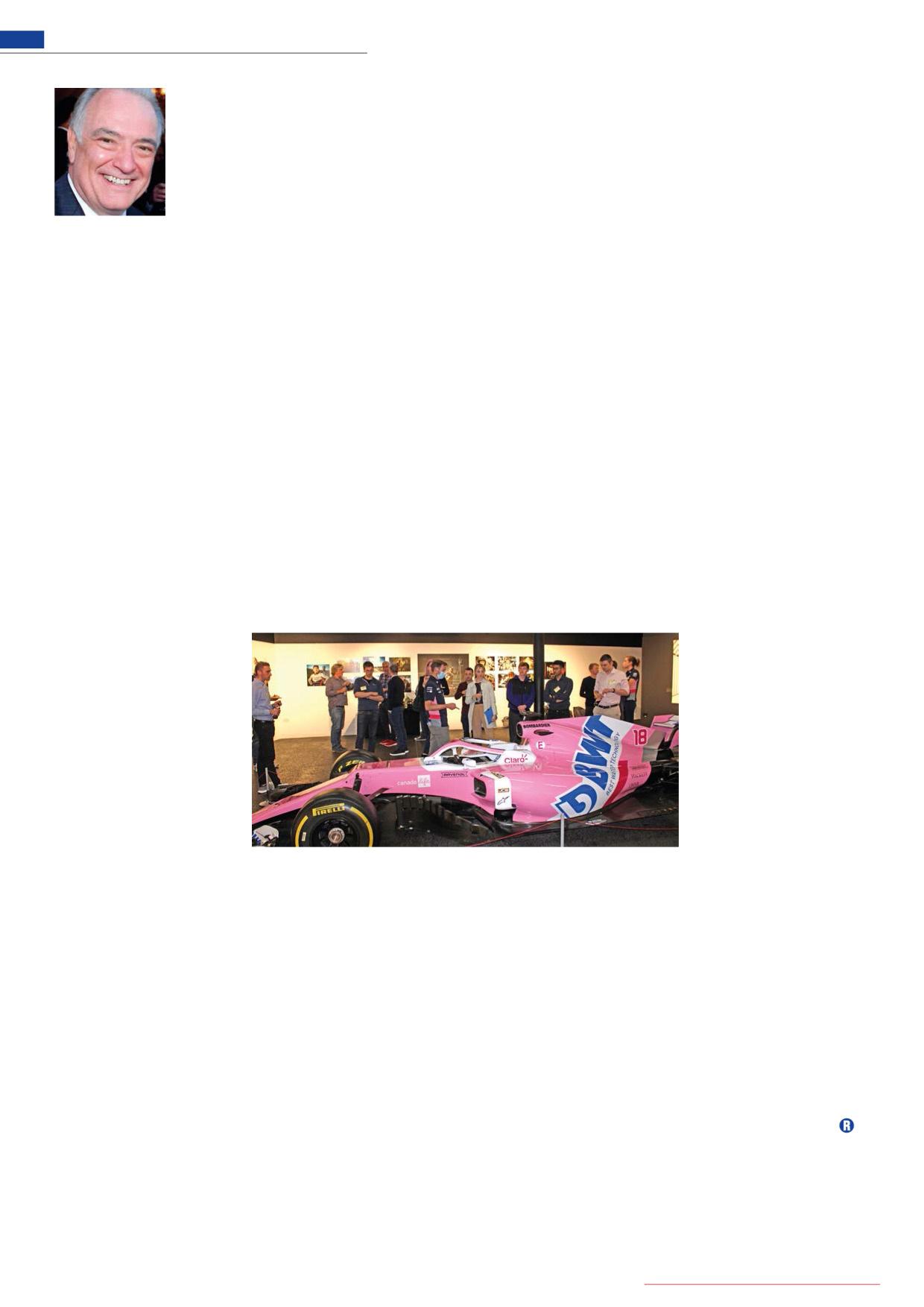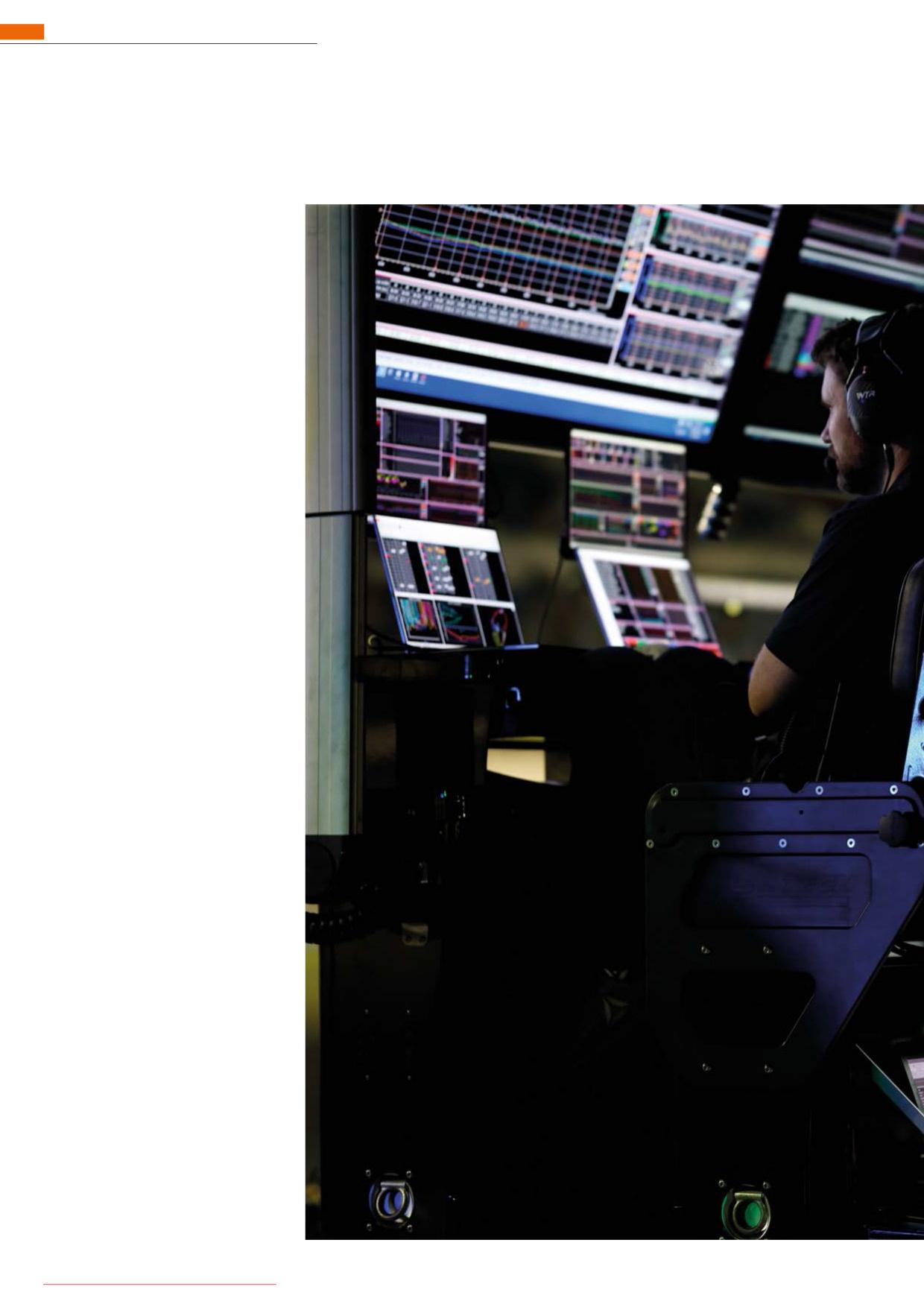
7 minute read
News
IndyCar parks engine upgrade
IndyCar has confirmed it will not
Advertisement
run the new 2.4-litre V6 engine in 2024 as originally planned, retaining the 2.2 litre twin turbo V6 engine instead. IndyCar’s two manufacturers pushed for the decision in order to focus on the introduction of a hybrid system.
The American single-seat category had planned a new chassis for 2023, but elected to continue with the Dallara IR18 as it remains fit for purpose. The series had also planned to introduce the new 2.4-litre, twin-turbo engine and hybrid one year later but that, too, is shelved.
With its partner manufacturers, GM and Acura, placing emphasis on the introduction of hybrid and a sustainable fuel, the decision has been taken to continue with the current 2.2-litre engine rather than introduce a new and expensive replacement.
GM and Acura have both tested their 2.4-litre engines on track, but it is understood that the financial pressure of scaling up to fill the grid with only the two engine manufacturers was a factor in the decision.
IndyCar has for a long time searched for a third manufacturer to join and help supply the grid, particularly at the Indy 500, but has failed to do so since Lotus ran engines in the 2012 race as re-branded Judd power units. The failure to land this third manufacturer, despite extensive research with suppliers from Europe and Japan, means GM and Acura will have to supply a grid of 27 cars for next season, and may have to go even further in 2024.
The introduction of heavily subsidised engines would be too costly for the two manufacturers, coupled with their investment in testing and development of the hybrid system that has proven to be challenging.
Plans for both a new chassis and engine for 2023 have been scaled back with cost saving and a focus on the new hybrid cited as reasons, but the lack of a third manufacturer may be more to blame
Mixed reactions to Super GT’s new biofuel
The Japanese Super GT series is set
to introduce carbon-neutral fuel for the 2023 season and has completed a test day with it following the final round of the series in November.
The GTA has announced its Super GT Green Project 2030, an environmental road map for cutting total CO2 emissions resulting from the entire Super GT series in half by 2030 as part of efforts to make the entire series carbon neutral.
The fuel is part of that strategy, and is derived from non-fossil fuel-based biomass, produced by Germany’s Haltermann Carless. During the test, the new fuel was compared to the existing fuel and drivers were quick to comment on the different smell, and engine characteristics.
‘The GT500 car has what you could call an ‘aggressively designed engine’ with a lot of advanced technologies applied in it,’ said Nissan driver Ronnie Quintarelli. ‘So, I thought that changing the fuel used would result in some changes, but in fact the changes were so small that I wouldn’t have noticed them if I hadn’t been told about the fuel change.’
‘Of course, there were careful adaptations made to the mapping, but I didn’t have any uncomfortable feelings about the acceleration response we drivers want. I thought that was rather incredible.
‘NISMO has already done some bench testing, and we had used carbon-neutral fuel in this year’s Super Taikyu competition, so I believe we were able to put to use data gained from those experiences.’
Ryuichiro Tomita’s comments were slightly less favourable: ‘There were no big problems that I felt, but I did feel there was a little less power and some negative effects in the feeling of the drive. I felt something lacking in the depth of power in the high rpm range.
‘Also, since it is a turbo engine, there is backfiring each time you up shift, and I feel the size of that was somewhat larger, and there was also some gap in our lap times with those we would get with the usual fuel.
‘However, the differences were only on the level of a feeling that today’s engine condition is a little off. If I hadn’t known it was a new fuel, I probably would have thought that.’
The new fuel is derived from non-fossil fuel-based biomass and produced by Haltermann Carless
IN BRIEF
The FIA has confi rmed a change to the roll hoop testing procedure in light of Guanyang Zhou’s accident at Silverstone in July 2022. Test loads will now be applied horizontally so improved fi xing of the roll hoop to the chassis will be required.
At its World Motorsport Council meeting in December the FIA confi rmed further changes to the naming of the World Rally Championship feeder series. The FIA WRC2 Open and FIA WRC3 Open will be known as the FIA WRC2 and FIA WRC3 respectively. Meanwhile, the FIA WRC2 Junior Championship is re-named the FIA WRC2 Challenger and the FIA WRC3 Junior class is now the FIA Junior WRC Championship. The FIA WRC2 Masters Cup is now the FIA Masters Cup.
The FIA WEC will feature only two choices of tyre specifi cation for each race other than Le Mans, where three will be available. As predicted, tyre heating will be banned in the series for 2023, following the long-term plan of the FIA.
GT3 cars will replace the GTE category in the FIA WEC from 2024 and the class will be called LMGT3. The cars will run with torque sensors on the driveshafts to help with performance balancing. The bodykits for Le Mans, which are limited in cost and inert in terms of aero eff ect, are now permitted but are not mandatory.

The FIA World Rally-Raid Championship has acquiesced to its manufacturers and introduced an equivalence of technology for its T1.U and T1+ classes. This will allow organisers to adjust, if necessary, the level of longitudinal acceleration between marathon rallies such as the Dakar. The system is intended to allow more sporting fairness between cars of diff erent engineering designs and limit cost escalation.
The Goodyear FIA ETRC
Sporting and Technical
Regulations allowing allelectric and hybrid powertrains to compete alongside ICE engines have been approved for next season, which will kick off in Italy in May.
Good year for Goodyear
The Goodyear Tire and Rubber
Company has been confi rmed to continue its supply of NASCAR’s top three national series in a new multi-year agreement. This continues Goodyear’s designation as the ‘Offi cial Tyre of NASCAR’, as well as the title sponsor of the Goodyear 400 held at Darlington.
‘From our manufacturing plants to offi ces around the world, racing is ingrained in our culture, and the importance of our relationship with NASCAR is refl ected in the quality, performance and engineering we put into every Goodyear Eagle race tyre,’ said Richard J. Kramer, chairman, chief executive offi cer and president at Goodyear.
‘Our performance on the racetrack plays an active role in the success of the sport and inspires the development of our consumer tyres, fuelling our commitment to take performance and innovation to the next level.’
For nearly 70 years, NASCAR has served as a proving ground for generations of Goodyear racing tyre engineers, innovating, preparing and supplying tyres that meet the most gruelling and demanding conditions at the tracks the series visits. The technology required to perform under race conditions also informs development and diff erentiates Goodyear’s consumer tyres.
‘Goodyear has been a trusted partner to the NASCAR industry since 1954, playing a critical role in our shared pursuit to deliver the best racing in the world,’ said Steve Phelps, president of NASCAR. ‘For more than 25 years, Goodyear Eagle tyres have been the only component that connects the Stock Car to the racetrack. Our continued partnership will allow us to push boundaries and innovate our racing product for generations to come.’
Goodyear and NASCAR’s nearly seven-decade relationship is built on shared values of competition and innovation. As the sport has evolved, so have Goodyear’s Eagle race tyres, leading to the introduction of new tyre technology, such as the racing slick in 1972, the radial tyre in 1989, the multi-zone tread design in 2013 and the 18in tyre used on NASCAR’s Next Gen racer.
Fittingly, Darlington Raceway – one of the Cup Series’ oldest active tracks – is also home to the Goodyear 400, and many of Goodyear’s milestones, including the brand’s fi rst offi cial NASCAR tyre test in 1954.
Goodyear produces more than 100,000 tyres for NASCAR’s top three series every year, and each one is hand built by Goodyear associates in Akron, Ohio, Goodyear’s global headquarters.










